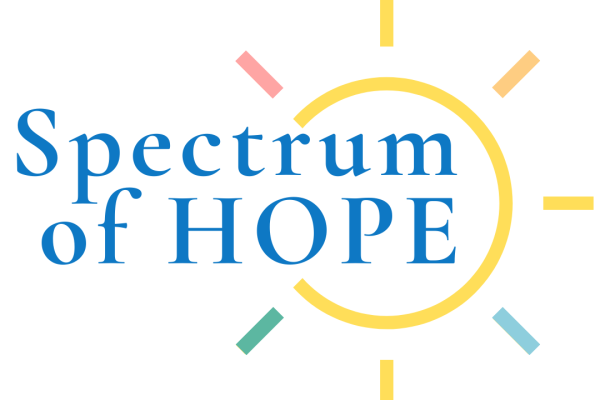Autism Spectrum Disorder (ASD) is a developmental condition with a variety of behavioral presentations. Some individuals with autism may experience difficulty with self-expression and the understanding of social cues. Others may struggle with motor skills, language, or executive function. Asperger’s Syndrome is a developmental disorder which has in the past been differentiated from or viewed as a “mild” form of ASD. Asperger’s is related to areas of social impairment and repetitive patterns of behavior. It does not, however, include the delays in language development or cognitive issues that are present in many cases of autism spectrum disorder.
Despite still being listed in the International Classification of Diseases, Asperger’s is not recognized in the latest version of the DSM-5 as a distinct condition from ASD. Anyone who would have been diagnosed with Asperger’s Syndrome in the past would now be considered to have autism spectrum disorder. Despite the change in terminology, many individuals may still identify with the label of Asperger Syndrome or wish to understand what their previous diagnosis means in terms of the contemporary classification of ASD. Keep reading to learn more about Asperger’s vs. autism and how they differ.
Asperger’s and “High-Functioning” Autism
The broad range of symptoms which individuals with autism present is sometimes categorized as “high or low-functioning” autism. The term “high-functioning” autism is used to describe someone who is capable of independent living, but may struggle with social or academic skills. “Low-functioning” autism would involve more fundamental struggles with issues like language use or independent living. Neither description is clinical but rather colloquial. In fact, This terminology has proven problematic. It can minimize the experience of autism for some, while implying that other individuals with certain difficulties cannot be successful, happy adults. However, many people still use these high and low-functioning classifications as shorthand. The DSM-V instead identifies three levels of autism severity, defined by the amount of support a given individual with autism requires in daily living.
Some people refer to Asperger’s as an example of “high-functioning” autism. The experience of those with the Asperger’s “profile” can prove profoundly challenging, with its effects on social and nonverbal communication. Many individuals with these sorts of Asperger’s-like presentations of autism are able to live independently, without assistance from others in daily living tasks. However, loved ones of people with autism know that the social impairments some experience in ASD can be difficult to deal with. In fact, they can be damaging to an individual’s confidence, mental health, and experience of daily living.
Technical Definitions of Asperger’s
While no longer a diagnosis in the DSM-V, the older ICD-10 lists criteria for Asperger’s, including “qualitative abnormalities” in reciprocal social interaction. They may also exhibit intense interests or repetitive patterns of behavior and activities consistent with ASD. The diagnostic criteria for Asperger’s also include delays in motor skill milestones, and possibly some level of clumsiness related to motor skills. Individuals who fit the Asperger’s profile would have no delay in “spoken or receptive language or cognitive development”; will have developed single words by two years or communicative phrases by three; and will display self-help skills and adaptive behavior consistent with their age.
Unlike the ICD’s classification of Asperger’s, the more recent DSM-V does not include Asperger’s as a diagnosis. Instead, it states that individuals with a previous well-established diagnosis of Asperger’s are now considered to have ASD. For people who exhibit communication issues without other behavioral or developmental signs of autism, the DSM recommends an evaluation for social (pragmatic) communication disorder.
What Does a Previous Diagnosis of Asperger’s Mean Now?
Those previously diagnosed with Asperger Syndrome may wonder what to make of the shift in classification. Just because Asperger’s is no longer preferred terminology in the medical community, it does not invalidate your loved one’s experience or mean that their identity as someone with Asperger’s is wrong. Many communities for people who have been previously diagnosed with Asperger’s exist, such as the Asperger / Autism Network. Such organizations offer information, resources, and a sense of community that speak to the unique presentations of autism that these individuals experience.
Whether one prefers the terminology of Asperger’s or autism, the social difficulties and associated conditions that many individuals experience require compassionate, targeted care that speaks to their unique challenges. This care can be just as necessary for individuals with outwardly “milder” instances of autism. Such care may include a focus on social development, nonverbal communication, or other unique areas of focus, depending on the needs of the individual. Treatment for Asperger’s-like instances of autism may use common treatment modalities, like Applied Behavior Analysis or similar therapeutic styles, modified to address social roadblocks such as establishing eye contact or holding a conversation. As with most treatment for autism, early intervention is preferable so that any developmental delays can be addressed as soon as possible.
We’re Here to Help
If your child or loved one has received a diagnosis of autism spectrum disorder, or has been diagnosed with Asperger Syndrome in the past, MySpot Care can help. Helping families for over a decade, MySpot Care offers Early Learner and Adolescent and Adult Programs across multiple locations in the Houston area. Our treatment approach is grounded in the proven principles of Applied Behavior Analysis, delivered by our experienced staff in a compassionate, caring environment. Let us develop an individualized treatment plan for your loved one which addresses their specific needs and goals, and helps them develop the skills they need to grow.


